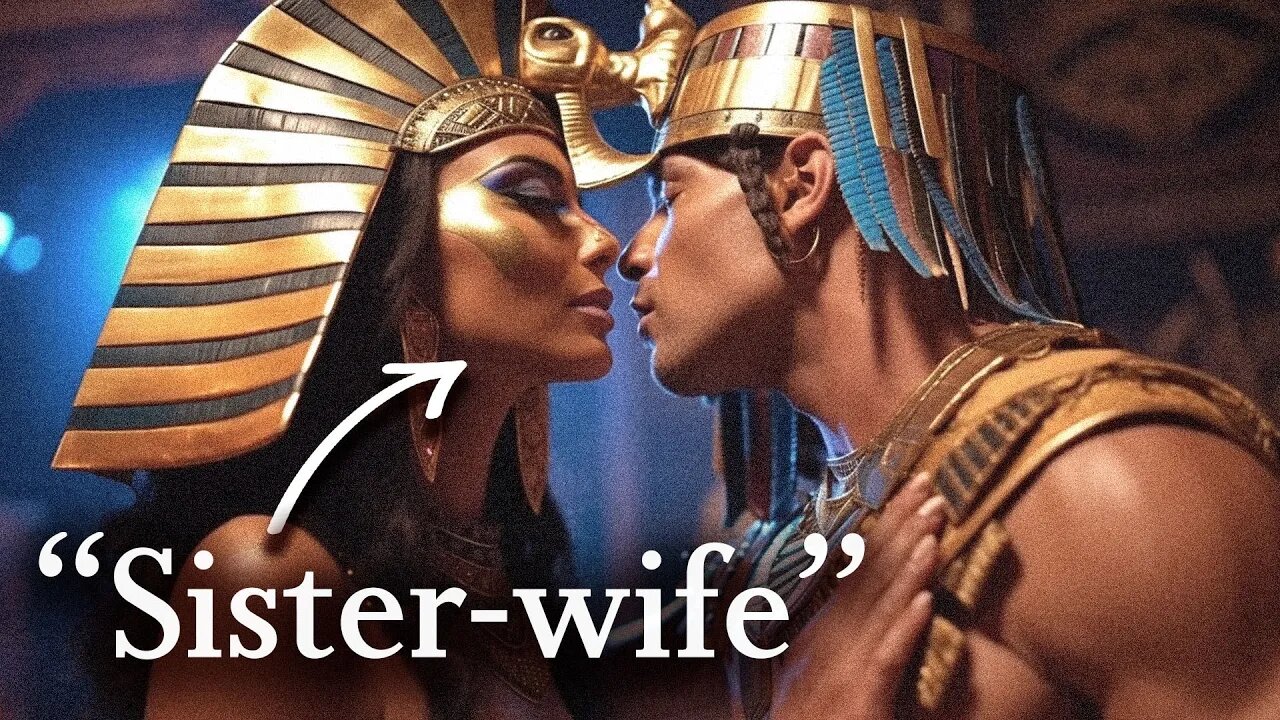Premium Only Content

The Dark Side of Ancient Egypt's Pharaohs and Their Mummies
In ancient Egypt, going back as far at least of the famous King Tutankhamen, who reigned from 1332BCE to 1323BCE, and was part of the long-lasting 18th Dynasty (c.1550BCE-1292BCE) in the New Kingdom of Egypt Period (1550BCE-1069BCE). We'll tell you more about Tutankhamen, or “King Tut” in a bit, but in addition to having one of the most glorious and preserved tombs of the ancient world, Tut and his relatives had their DNA tested. No, the Egyptians didn't possess some kind of advanced alien technology 3,000 years ago – like some people do believe – their DNA was removed in 2010 by a team of German and Egyptian researchers.
It turned out that Tut was the incestuous product of his father, the famous religious reforming pharaoh Akhnaten, and his sister. Akhnaten, also known as “Amenhotep”, was also married to the famous Queen Nefertiti, who may have ruled Egypt for a time after her husband's death and before Tut came of age. Also, Nefertiti was the mother of Tut's wife, Ankhesenamun – which would make her Tut's half-sister.
Birth defects are quite possible in a child born of an union between brother and sister – but perhaps not as high as they would be if the “practice” was carried on for many years, which it was in ancient Egypt. That's not to say that all royal Egyptians married their relatives or had children by them, but enough did to make it a “thing,” and Tutankhamen's body was evidence of that. The famous pharaoh had a clubfoot, a common disability among those whose parents are related, and bone necrosis, which restricts or blocks blood to various areas of the skeleton, especially the legs, and feet. The necrosis may have been due to injury, not incest, but we'll tell you more about that in a moment! We know that Tut had a pretty face, at least judging from the sculpture on his sarcophagus or coffin, but from the neck down – not so pretty!
Nefertiti, more formally known as Neferneferuaten-Nefertiti is famous for being the wife of Akhnaten, who attempted to create a new branch of the Egyptian religion when he promoted the idea of a single god, Aten, the god of heat or sometimes called the god of the sun. Unfortunately, Akhnaten was not remembered favorably in ancient Egypt because he promoted the idea that HE was the personification of Aten on Earth. Nefertiti was his wife and Tut's stepmother. We've already mentioned that she may have ruled the empire while Tut was still a young boy, but she is also so famous because of her most well-known statue. Nefertiti's beauty is apparent, even 3,000 years later, unlike many ancient statues still with their faces. The other Egyptian queen that everyone knows is Cleopatra (69BCE-30AD), or, as she's formally known, "Cleopatra VII Philopator "- "Cleopatra the Father-beloved," which likely has normal and no incestuous nuance to it. Or maybe not – she was wed to her much younger brother, Ptolemy XIII, and was also the product of an incestuous union between her father and his sister. In the popular series "Rome," Cleopatra schemes with her lover, Julius Caesar, to have her "brother-husband" eliminated, with her put on the throne. That never happened, but she did rule the country in all but name, for her brother was too young, and Cleopatra was well connected to the now dominant Romans, especially Caesar and then his top general, Mark Antony. Incidentally, Cleopatra was part of the Ptolemy Dynasty, who descended from one of Alexander the Great's generals – she was Greek, but unlike her ancestors, she not only spoke Greek, but Egyptian as well.
#ancientegypt #kingtut #cleopatra #egypt #pharaoh
Scriptwriter: Matthew Gaskill
Video Editor & Motion Graphics: Jason
Voice-over Artist: Stephan Vox
Music: Epidemic Music
Copyright © 2021 A Day In History. All rights reserved.
DISCLAIMER: All materials in these videos are used for entertainment purposes and fall within the guidelines of fair use. No copyright infringement intended. If you are, or represent, the copyright owner of materials used in this video, and have an issue with the use of said material, please send an email to adayinhistory2021@gmail.com
-
 19:31
19:31
A Day In History
1 year ago $0.15 earnedBIGGEST American War Crime Cover-Up Of The Vietnam War (Warning* Mature Audiences Only)
6891 -
 1:15:15
1:15:15
JULIE GREEN MINISTRIES
2 hours agoTHE CIA HAS BEEN A GIANT IN THIS LAND THAT WILL BE TAKEN OUT
67.7K94 -
 LIVE
LIVE
The Bubba Army
23 hours agoBURN The FLAG, Go to JAIL! - Bubba the Love Sponge® Show | 8/26/25
2,236 watching -
 29:45
29:45
DeVory Darkins
17 hours ago $6.21 earnedDemocrat Governor suffers EMBARRASSING LOSS to Trump as ICE takes Garcia into custody
20.3K70 -
 LIVE
LIVE
JuicyJohns
1 hour ago🟢#1 REBIRTH PLAYER 10.2+ KD🟢
79 watching -
 18:22
18:22
World2Briggs
21 hours ago $2.63 earnedThe New York Rant: Point Blank With No Fluff or BS. A Warning
11.7K7 -
 42:52
42:52
The Finance Hub
15 hours ago $3.08 earnedBREAKING: ALINA HABBA JUST SHOCKED THE WORLD!
10.5K32 -
 2:00:44
2:00:44
BEK TV
1 day agoTrent Loos in the Morning - 8/26/2025
13.4K -
 12:15
12:15
Nikko Ortiz
19 hours agoMonday Gun Fails
69.7K17 -
 8:19
8:19
MattMorseTV
18 hours ago $12.36 earnedTrump is ACTUALLY DOING IT.
68.9K54